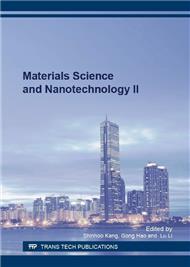p.85
p.90
p.95
p.102
p.111
p.116
p.123
p.127
p.132
The Effects of Cutting Parameters on Surface Texture of Hybrid Composite CFRP/AL2024
Abstract:
The use of hybrid composite materials has increased due to their special mechanical and physical properties. However, machining of these materials is extremely difficult due to non-homogeneous, anisotropic and highly abrasive characteristics. The performance of machined surface quality of CFRP/Al2024 was described using two level factorial methodology. This research aims to study the interaction effects and significant factors of cutting parameters on the surface quality and optimise the cutting parameter for the surface quality of CFRP/Al2024 1μm to 2μm. The trimming process test was performed under dry conditions using burr tools 6mm diameter of end mills. The factors investigated were spindle speed (N), feed rate (fr) and depth of cut (dc), meanwhile profile roughness parameters (Ra) of CFRP and Al2024 were the response variables. Results show that the best estimated value of fr should be 500 mm/min to 530 mm/min, N is between and 2313.870 rpm to 2336.042 rpm. For both responses, N is the most significant effect followed by fr and dc.
Info:
Periodical:
Pages:
111-115
Citation:
Online since:
August 2016
Keywords:
Price:
Сopyright:
© 2016 Trans Tech Publications Ltd. All Rights Reserved
Share:
Citation:


